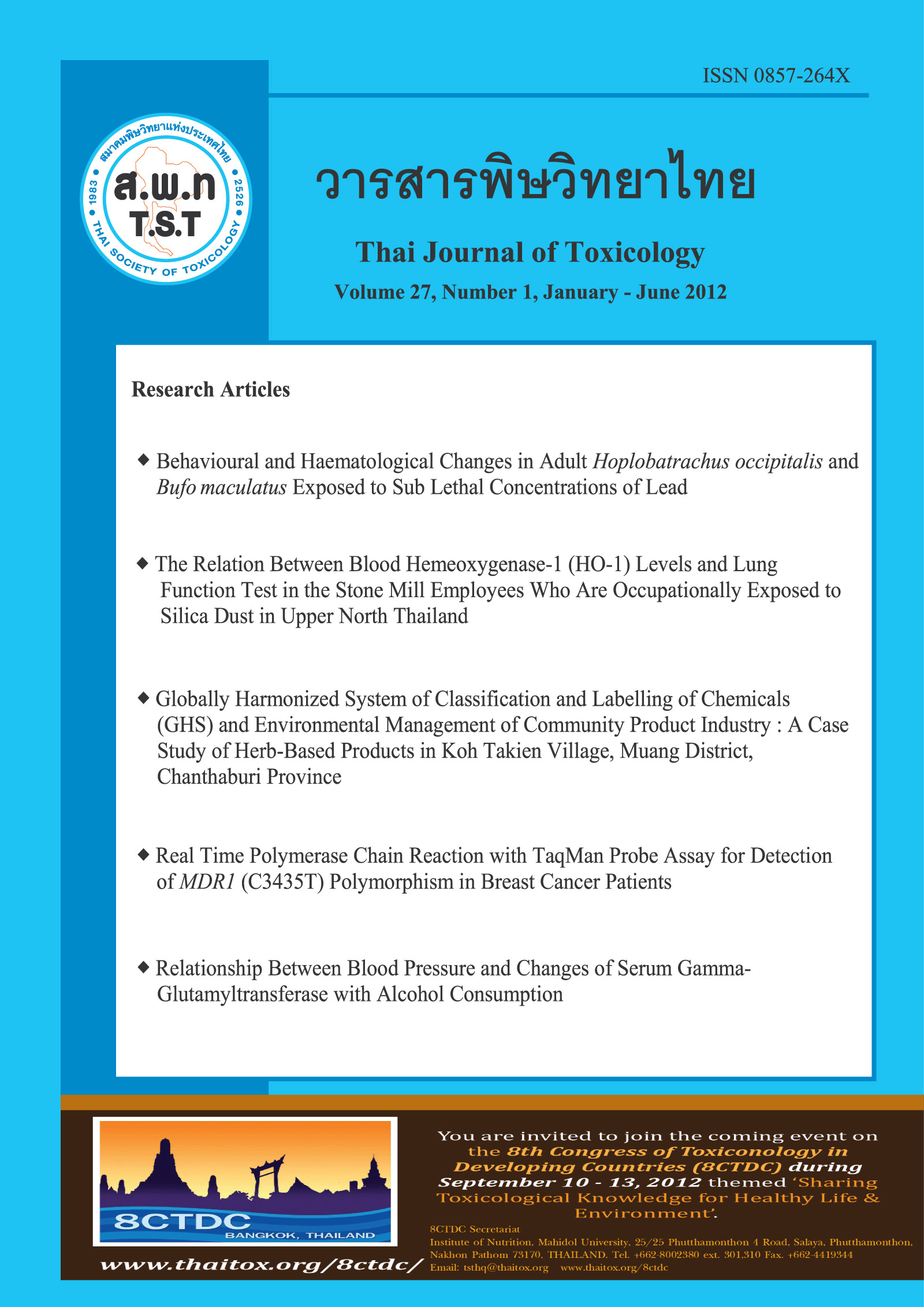Behavioural and Haematological Changes in Adult Hoplobatrachus occipitalis and Bufo maculatus Exposed to Sub Lethal Concentrations of Lead
Main Article Content
Abstract
Hoplobatrachus occipitalis and Bufo maculatus were exposed to sub lethal concentrations (0.25, 0.50, 1.00 and 2.00mg/l lead oxide) for 28 days. There were 3 replicate tanks per treatment and 5 individuals per tank including control groups. A behavioural change in coloration in skin (dark permanent colour) were observed in the toads at the end of the experimental period. The haematological alterations after the examination of blood indices during the period of exposure showed that total erythrocyte count (TEC), haematocrit (Hct) and haemoglobin (Hb) concentration decreased (p<0.05) in both amphibian tetrapods relative to controls. The decrease was concentration-dependent with increase in the concentration of lead. There was elevation in total leucocyte counts (TLC) with increase in the concentration of lead. There was no significant variation in all the haematological parameters studied between both species. The study has shown that the exposure of the frog Hoplobatrachus occipitalis to lead could cause alterations in the haematological indices which could induce unfavourable physiological changes in the target organism ultimately leading to death.


